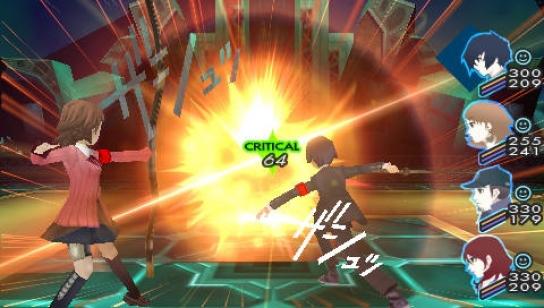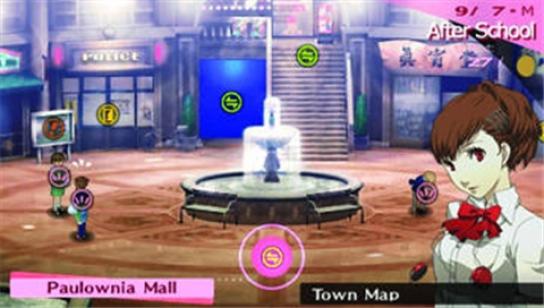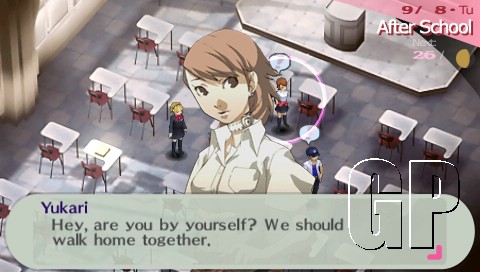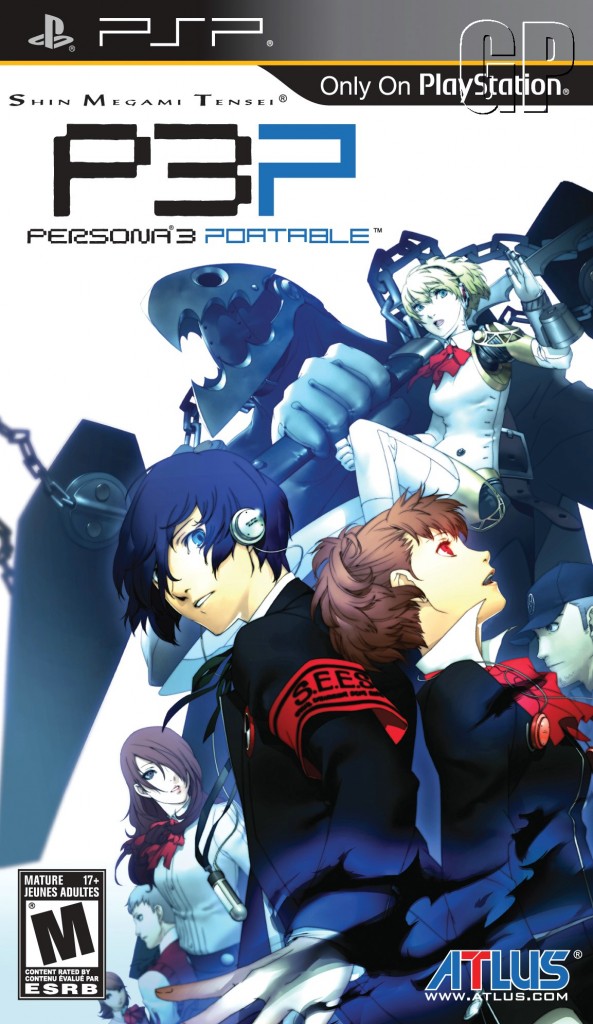- Persona 3 Portable: A promising start
- Roleplaying and time management in Persona 3 Portable: Who says there’s no roleplaying in JRPGs?
- Persona 3 Portable’s setting: A pop-cultural window onto the world
- Combat in Persona 3 Portable: The quick and the dead
- Persona 3 Portable: Finished! Initial (spoileriffic) thoughts on the ending
- Persona 3 Portable: The Retrospective Verdict
- Does a good game make a good anime? Persona 4: The Animation – eps 1 to 9
- The Vita-stic Persona: 4 Golden
2006 was a big year for video games. That year, two of the current generation of consoles launched: the Playstation 3 and the Wii. The rival Xbox 360 launched the previous year, but 2006 saw the debut of one of its signature franchises, Gears of War. And the king of the previous generation, the Playstation 2, was at its zenith. In 2006, Capcom released the stunning (and superb) Okami; Square Enix gave us Final Fantasy XII… and in Japan, Atlus released Persona 3, the latest instalment in the Shin Megami Tensei franchise. When Persona 3 made its way to the West in 2007, it received a glowing reception; when I finally played the game, last year, I expected the world of it. It did not disappoint.
To be sure, Persona 3 received a few coats of paint in between 2007 and 2011. An enhanced PS2 version, Persona 3: FES, added an epilogue and tweaked the core game; the PSP port I played, Persona 3: Portable, added an alternate, female protagonist and imported some of Persona 4’s gameplay enhancements (though it also had to replace in-engine cutscenes with still art and “talking heads”). But the core of the game has been the same throughout. You guide a modern-day high schooler through one year of his (or her) life, allocating precious time slots between studying, shopping, socialising with one of ~20 people – school buddies, an elderly couple, a little kid, and more – and, uniquely for a teenager, dungeon crawling. The “social simulator” and “dungeon crawler” halves of the game are linked: the main character derives his/her combat abilities from guardian spirits called Personas. Each Persona, and each possible character relationship, is assigned to a given “arcana”, and the stronger a friendship, the stronger a newly created Persona of that arcana will be.

This design has several implications:
First, it brings Persona 3’s gameplay in line with its subject. Regardless of story, the gameplay in most RPGs (Japanese or Western) usually skews towards combat – but with its social simulation, its evenings spent doing homework, and its bites grabbed on the way home from school, Persona 3 conveys how its teenaged hero actually lives.
Second, the need to manage time weaves interesting choice into the fabric of gameplay. Do I hang out with character A, because I want a Persona of the relevant arcana to clear this stretch of the game? Do I push him to Tuesday so I can see character B instead? Should I spend my evening dungeon-crawling, or should I hit the books instead?
Third, more subtly, it fosters roleplaying. In a video game, we roleplay by making choices: Do I back this side in a dispute, or that side? Do I obey my lord, or follow my own conscience? These choices are typically discrete: the end of a quest might offer multiple solutions, or the main plot might branch off at specified points. In Persona 3’s case, the plot might be linear, but the constant stream of choices allows players the same opportunity. Yes, you can approach it as an exercise in powergaming… but it was far more rewarding for me to decide “as my character would”, spending time with NPCs I liked, and behaving consistently with the personality I imagined him to have.

None of the game’s elements is perfect. As a dungeon crawler, it suffers from some overly long and tedious late-game boss fights. As a social simulator, it loses a bit of interesting tension once you max out the main character’s stats around the halfway mark. And its main plot suffers from several flaws. Gameplay and story segregation create occasional plot holes; the plot is weakened by a reliance on in-universe logic (think “Captain, we have to replace the dilithium crystals!”) rather than character conflict; and it labours under a fundamental contradiction: it takes itself very seriously at the same time that it revolves around superpowered teenagers.
But ultimately, those flaws are minor compared to what Persona 3 does right. It’s a very good dungeon crawler, a very good social simulator/time management game, and most of all, it delivers the most precious attribute in an RPG: it made me care. It made me care about its world, the world I explored every time I sent the main character through town in search of a friend or a coffee. And through great dialogue and voice acting, it made me care about its characters. Their story arcs more than made up for my complaints about the main plot: not all were great, but some were hilarious, others moving. From the first hour of gameplay, I laughed at their antics; when the story turned sombre, I felt for them. And through their unfolding stories, the game was able to convey some surprisingly meaningful themes.

Evidently, a lot of players agreed with me. Not every game enjoys the recognition that it deserves, but this saga has a happy ending. The Persona franchise has gone from strength to strength: a PS2 sequel, Persona 4, came out in 2008, and in the limited time I’ve spent with it, it addresses every complaint I have about Persona 3. A PS Vita port, Persona 4: Golden, and a PS3 fighting game, Persona Arena, are both due out later this year. And most recently, Persona 3: FES has been re-released as a Playstation Network download for PS3. For anyone with a Sony platform, these games are easily accessible.
That’s a good thing. This is one game that every RPG aficionado should play, even those who normally don’t enjoy Japanese RPGs. With its marriage of a great concept and good execution, Persona 3: Portable wasn’t just one of the best games I played last year – it’s one of the best RPGs I’ve ever played. Highly recommended.
We hope you enjoyed this retrospective/review! To quickly find this post, and our other articles, click the “reviews” or “features” tabs at the top of this page.
Resources
Buy Persona 3: FES (PS2) from Amazon US
Buy Persona 3: Portable (PSP) from Amazon US
The basis of my review
Length of time spent with the game: Over 96 hours (!!!).
What I have played: Finished the male protagonist’s route.
What I have not played: The female protagonist’s route.

